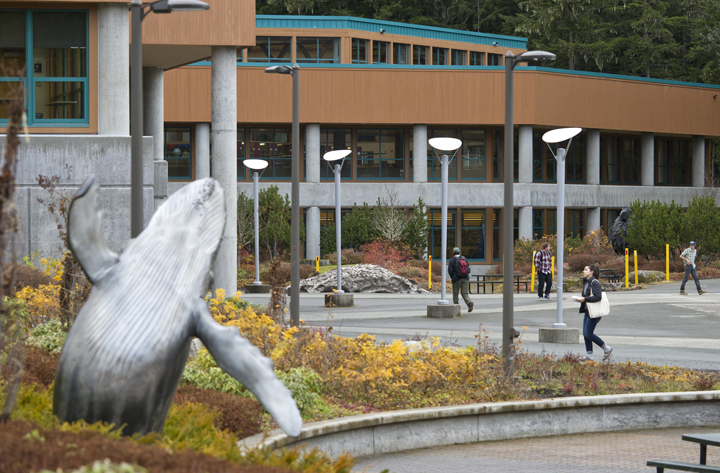University of Alaska President Jim Johnsen’s plan to consolidate three schools of education under one roof likely won’t have a big impact on University of Alaska Southeast students — this year.
In future years, that could change.
Due to the loss of tens of millions in funding from the state, the UA system is being forced to make difficult and unpopular decisions. And while many Alaskans have focused on the loss of collegiate athletics teams, in Juneau these budgetary losses translate to people and programs.
On the chopping block for UAS is its School of Education, one of UAS’s most “visible and viable programs,” according to UAS’s advisory council in a Nov. 7 resolution. The UAS School of Education and its counterpart in Anchorage would be consolidated into a single school, based in Fairbanks. Therein lies the rub.
The consolidation cuts from the top, eliminating education deans at UAS and UA. Little else will change, with faculty staying in place and the same programs being offered. The problem facing UAS, and by extension Juneau, is that future decisions (think future cuts to the School of Education) will be made from Fairbanks. We don’t see how that will bode well for UAS, School of Education faculty based here, or program offerings (Note: About 25 percent of UAS student are enrolled in the School of Education.)
[Juneau worries about possible UA change]
Recent history tells us that further budget cuts are imminent. That not only applies to the UA system but every government office. We wouldn’t expect an administrator in Fairbanks to cut away equal portions of UAF resources when budgets are trimmed in the future.
Typically jobs stay in the location where decisions are made. It’s one of the reasons Juneau fights so hard to have department commissioners live and work here; those jobs are less likely to move north.
UA President Jim Johnsen will seek approval by the UA Board of Regents for his Strategic Pathways initiative during a meeting today. If approved, the plan would then go to the Northwest Commission on Colleges and Universities for approval. If it’s greenlighted again, UAS’s School of Education will be no more.
Unfortunately consolidations are necessary, but UAS gains nothing with these changes. No programs are being merged under the UAS banner. UA, in contrast, will become the new administrative hub for nursing programs.
Undergraduate fisheries and environmental sciences are a strength at UAS, and if each campus is asked to give something up, each should have the opportunity to gain something as well. Basing fisheries and environmental sciences at UAS is one example that would keep the university not only relevant but vibrant in the years to come. If not fisheries and sciences, perhaps mining or another program could provide the same benefit here.
Otherwise, UAS could be doomed to become a satellite campus in the years to come. We believe in the need for Strategic Pathways, but as it stands now we fail to see how the future of UAS fits into this grander vision for higher education in Alaska.

